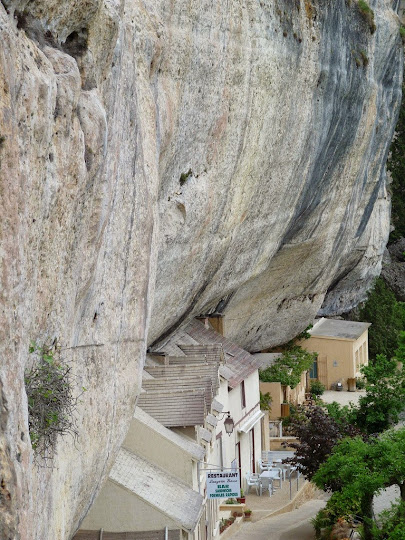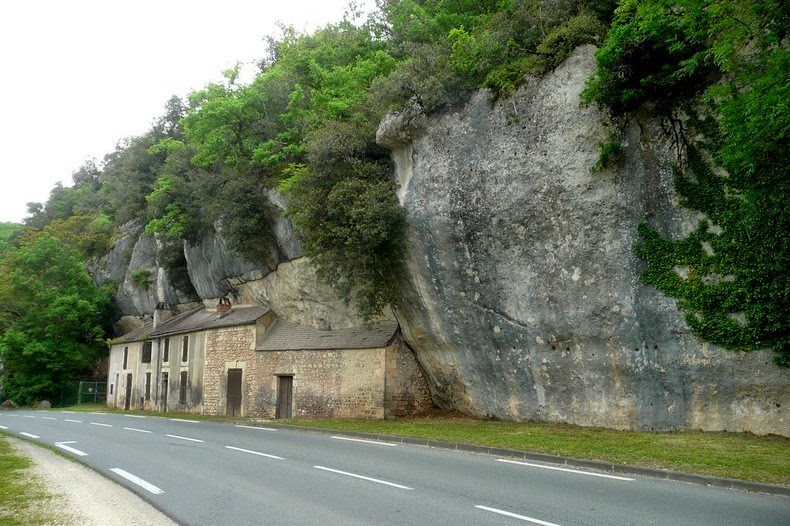
Les Eyzies was at one time a small hamlet tied to the Lordship of Tayac. During the 8th and 9th centuries it probably had quite a large population, as shown by the numerous troglodytic habitations and the presence of groups of buildings fortified against the Viking raiders. The cliffs are riddled with elevated look-out posts know as cluzeaux aeriens, artificial chambers cut out of the limestone cliffs so high one wonders how anyone ever got up there.
There are scores of caves and grottos to visit in Les Eyzies, including numerous medieval fortresses built into the rocks, a fortified church and many museums. Les Eyzies contains some 150 prehistoric sites dating from the Paleolithic and about 25 decorated caves.
The Grotte de Font-de-Gaume, just outside of Les Eyzies, has over 200 paintings and engravings of bison, horses, mammoths, and reindeer, as well as a few stylized human figures. The multi-colored paintings date from the Magdelenian era, about 17,000 years ago. The Abri de Laugerie Basse is another rock shelter that was occupied over 17,000 years ago. It is known for the large number of tools and artifacts that were discovered in place, including a sculpture of a horse and another of a female figure.
Then, there is Abri de Cro-Magnon itself where the famous discovery of the Cro-Magnons were made. The shelter of the Cro-Magnon and several other sites, however, have been closed to the public because of preservation concern.











Source
